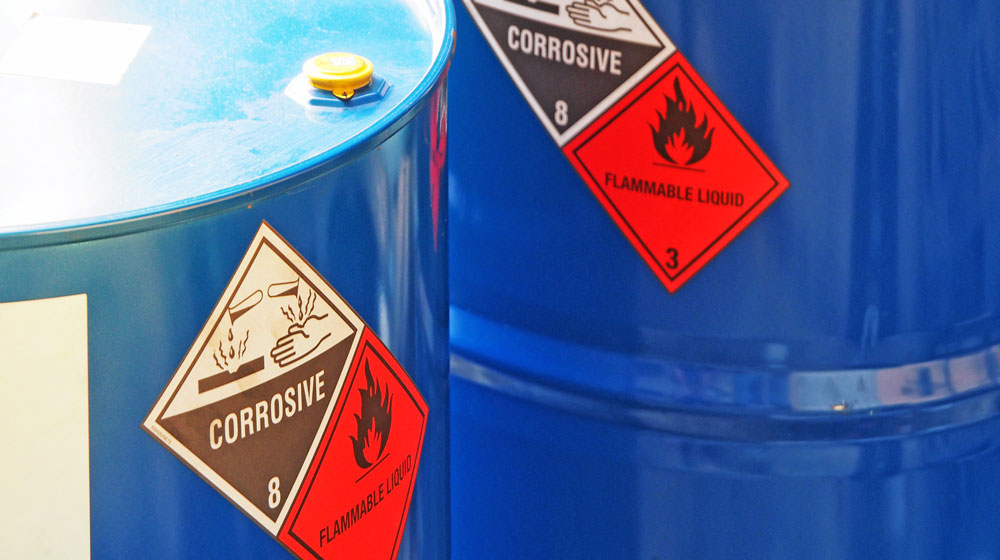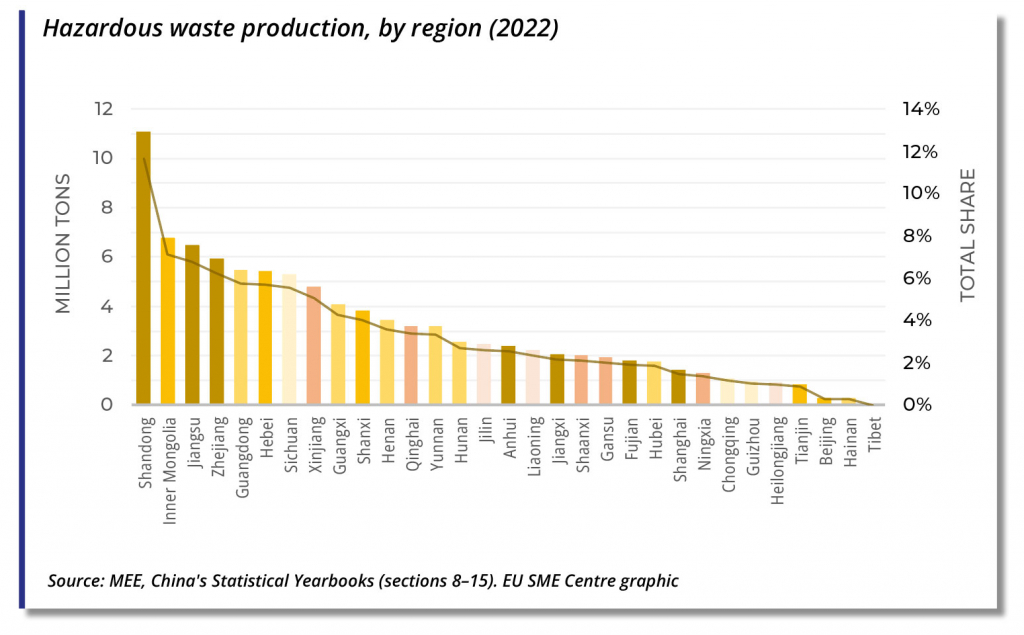


Please sign in or create an account to download the full report.
With decades of rapid economic growth and industrialisation, China has become the world’s largest producer of several types of hazardous waste, particularly industrial waste. To manage this, China has developed a comprehensive regulatory system that covers the entire lifecycle of hazardous waste. Currently, the country is navigating a transitional phase, balancing its development needs with sustainability goals, including its targets for carbon peaking and carbon neutrality.
The new targets on carbon emission peak date and carbon neutrality create a strong demand for technologies that minimise environmental harm, reduce waste and emissions, and enhance recycling rates and efficiency. This presents European small and medium-sized enterprises with significant opportunities. Our report on China’s hazardous waste sector aims to provide EU SMEs with a practical guide on the market and its regulations.
The first part of the report gives an overview of China’s hazardous waste market over four decades of development. This chapter highlights key legislative and regulatory milestones, such as the Solid Waste Law. It also discusses the two main drivers of the sector: government support and technological innovation. In this part, we also analyse the market’s structure, its size, and its geographical distribution.

The second chapter provides detailed market entry requirements for EU SMEs. Although China’s hazardous waste sector does not impose major restrictions on foreign investment and is considered an ‘encouraged’ industry, it is crucial for EU companies to thoroughly understand and comply with key regulations. This includes the National Hazardous Waste Catalogue and the National Medical Waste Classification Catalogue, as well as adhering to China’s national standards.
The third chapter outlines the key opportunities in China’s hazardous waste market, focusing on specific technologies that are in high demand. It also offers practical tips and strategies for EU SMEs planning market entry. However, taking advantage of these opportunities requires thorough preparation, significant resources, and long-term commitment, as several challenges remain.
The final section includes an interview with an industry practitioner based in China, offering insights into the strengths of EU SMEs and providing practical advice for market entry.
China’s hazardous waste market offers significant opportunities for EU SMEs, driven by increasing government focus and market demand for sustainable solutions and advanced technologies. However, seizing these opportunities requires a deep understanding of China’s regulatory framework, strategic planning and execution, considerable financial resources, and long-term commitment. With these elements in place, EU SMEs can effectively position themselves for success in China’s evolving hazardous waste market.
1. Sector overview
1.1 Development background
1.2 The intersection of government support with technological innovation
1.3 Market structure and size
1.4 Key players
2. Regulatory framework
2.1 The National Hazardous Waste Catalogue
2.2 The National Medical Waste Classification Catalogue
2.3 Standards and technical specifications
3. Opportunities, tips and challenges
4. Interview with an industry practitioner